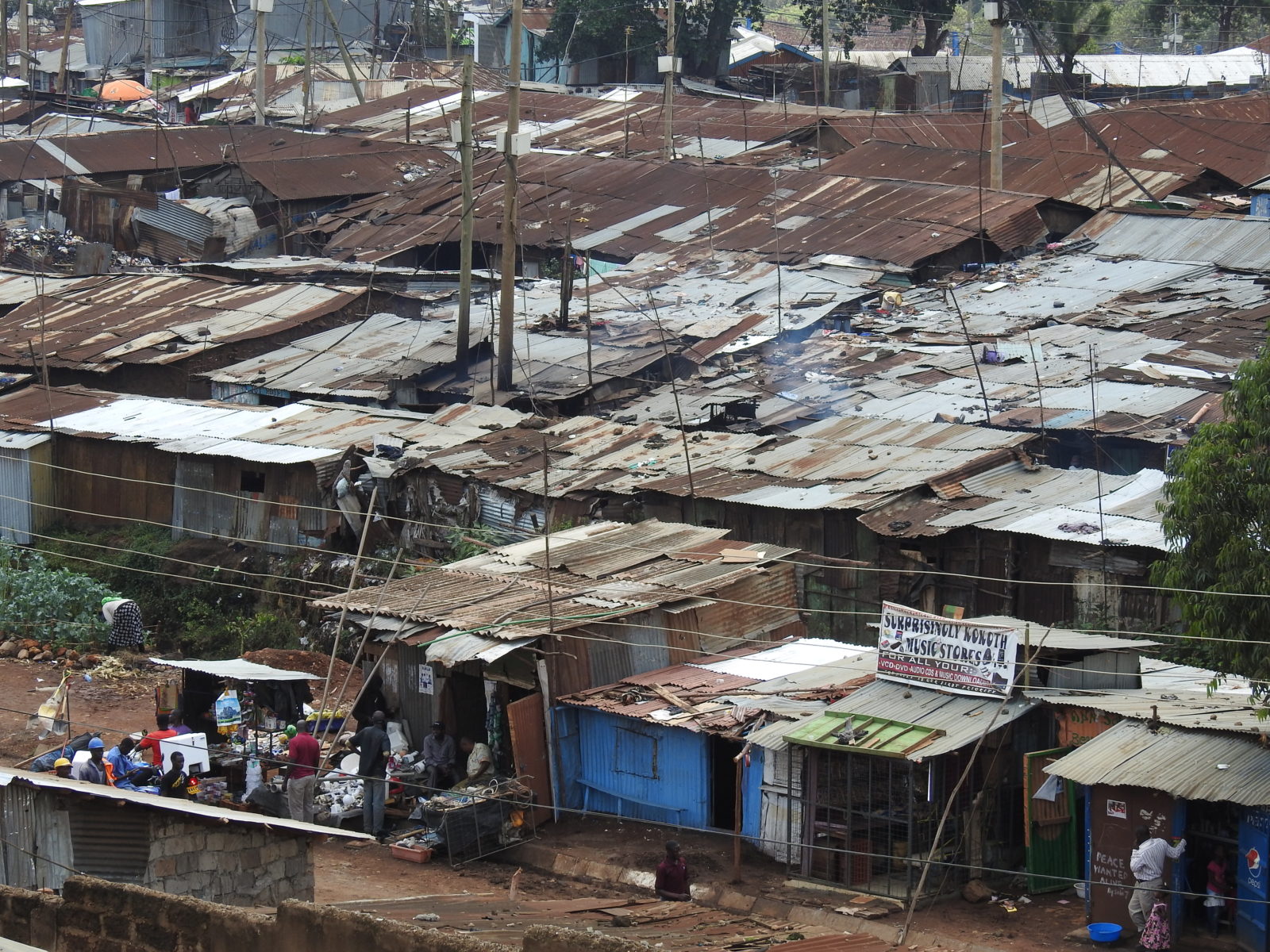Kibera is within the city of Nairobi in Kenya.There are approx 1.2 million slum dwellers in the Kibera in an area of 2.5 square kilometres. 75% of the population of Kibera are under the age of 18 and 100,000 children living here are orphaned. It is the biggest slum in Africa and the slum environment is degrading and dehumanising, characterised by abject poverty, corruption, periodic violence and contagious diseases due to environmental pollution. The majority of the slum dwellers are reduced to begging due to lack of employment and opportunities to earn a living for individual wellbeing or provision of their families.
Land Ownership
The Government owns all the land. 10% of people are shack owners and many of these people own many other shacks and sub-let them. All the rest are tenants with no rights.
Housing
The average size of shack in this area is 12ft x 12ft built with mud walls, screened with concrete, a corrugated tin roof , dirt or concrete floor. The cost is about Ksh 700 per Month (£6). These shacks often house up to 8 or more, many sleeping on the floor.
Population
All the people are African. The original settlers were the Nubian people from the Kenyan/Sudanese border – they now occupy about 15% of Kibera, are mostly Muslim and are also mostly shack owners. The other shack owners are mostly Kikuyu (the majority tribe in Nairobi) – although in most cases they do not live there but are absentee landlords. The majority of the tenants are Luo, Luhya and some Kamba – these people are from the west of Kenya. There are many tensions in Kibera, particularly tribal tensions between the Luo & Kikuyu, but also between landlord and tenant and those with and without jobs.
Electricity
Only about 20% of Kibera has electricity. UN-Habitat is in the process of providing it to some parts of Kibera – this will include street lighting, security lighting and connection to shacks (this costs Ksch 900 per shack, which in most cases is not affordable).
Water
Until recently Kibera had no water and it had to be collected from the Nairobi dam. The dam water is not clean and causes typhoid and cholera. Now there are two main water pipes into Kibera, one from the municipal council and one from the World Bank. Residents collect water at Ksh 3 per 20 litres. Many residents set up buckets to collect rainwater from their roof when it rains, the hazards this water contains are too many to mention, most roofs produce highly contaminated water.
Sewage
In most of Kibera there are no toilet facilities. One latrine (hole in the ground) is shared by up to 50 shacks. Once full, young boys are employed to empty the latrines – they take the contents to the river. UN-Habitat and a few other agencies are trying to help and improve this situation but it is painfully slow. Most sewage runs downhill in open trenches, resulting in stagnation and pooling problems that breed insects and odour.
Unemployment
Kibera is near the industrial area of Nairobi where up to 50% of the available workforce are employed (usually in fairly unskilled jobs). However, there is still an unemployment rate of 50%. This is why the training and teaching of skills is very important.
Kibera needs land/tenancy rights, housing, water, electricity, health clinics, education, employment, security, plus much more. Below is a list of major problems leading to poverty and disease in Kibera:
– prone to cholera and typhoid due to poor sanitation and hygiene
– ineffective waste water drainages
– 58% of the population is under 14 years old
– very high proportion of orphaned children due to HIV
– very high unemployment, especially among men
– insufficient recreation facilities
– lack of clean water supply
– malaria is a severe problem in Kibera
– insufficient and very poor schools
– inadequate healthcare
– prone to political/tribal strife
– noisy and lack of privacy due to high population
– no flora and fauna (trees or animals)
